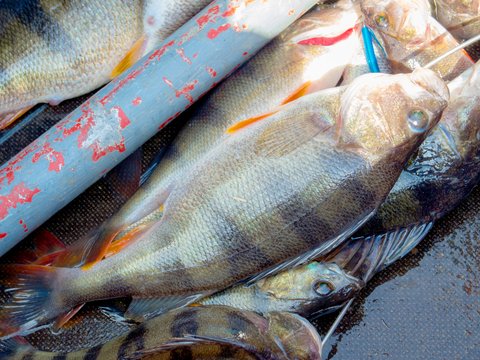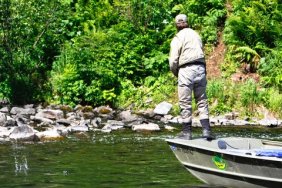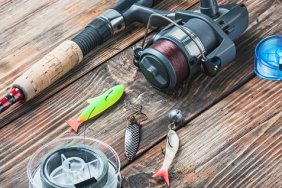
In the minds of many anglers, yellow perch lie in a gray area, somewhere between panfish and true gamefish. The smaller cousin of the walleye is often overlooked, but can provide some top-notch fishing action and a great meal, during the summer months.
Anglers looking to take a serious stab at perch fishing this summer, can improve their odds by following a few important tips.
Schoolers
First, let’s remember that perch are cousins of the walleye, which means there are some significant similarities between the two fish. Like walleyes, perch are schooling fish, so if you find one, you are likely to find more. If you catch a perch, stay on that spot, because chances are good you will catch many more, without too much trouble.
Bottom fish
Where do you find perch? They’re usually near the bottom. Keep your bait within a foot or two of the bottom and you are far more likely to hook a perch. During the summer, perch will be found in deeper water than they are in the winter or spring. Look for them near rocks and gravel, or near sparse weedlines along points or other structure like bars or humps. Perch are usually not found near thick weed cover.
All day
Perch can be caught at any time during the day, but it is important to know that they feed in cycles. One hour, they may be feeding heavily, and the next hour, they not be feeding at all. If the bite stops, move and try to locate another concentration of perch that may be feeding.
Go light
Perch are smaller fish than walleyes and like walleyes, their bite can often be very light. For this reason, you need maximum sensitivity. Use an ultralite rod with no more than 4-pound test line. The rod should be stiff to aid in setting the hook.
Baits
Think about baits that work well for walleyes; then think smaller. Live bait like nightcrawlers or leeches fished on a small, colorful jig can be deadly for perch. Think flash and experiment with color. Try jigs that also have a spinner blade. During the summer months, try small crayfish or crayfish imitations.
Work it slow
One of the best techniques for perch is vertical jigging. Drop the jig to the bottom and let it hit the bottom. Let it sit there. Then give it a short, upward jerk and drop it back down to the bottom. Give the perch plenty of time to see the bait and react to it. If you can see a school on a fish finder, try to work the edges of the school. If you drop a bait right on top of them, it may scare the fish.
Small attracts big
If you find a school of small, feeding perch, stay on the school. The activity of the small perch often attracts larger perch. It may take 20 or 30 minutes, but it is a common pattern.








